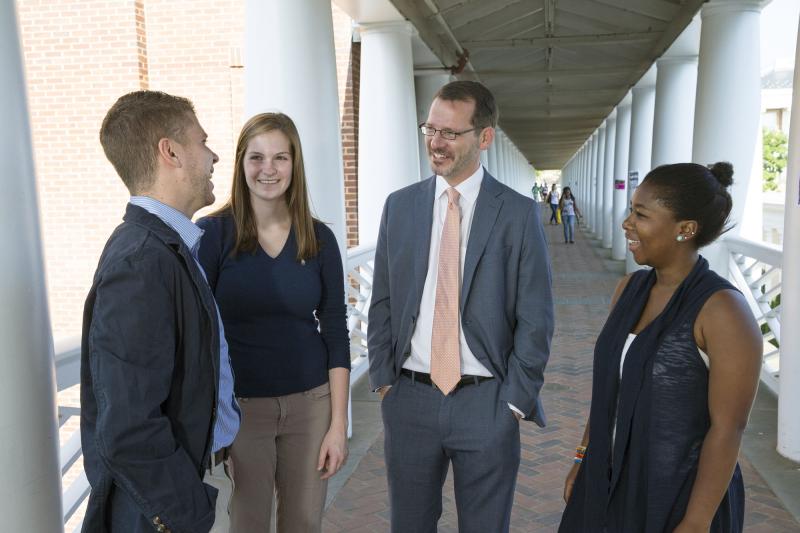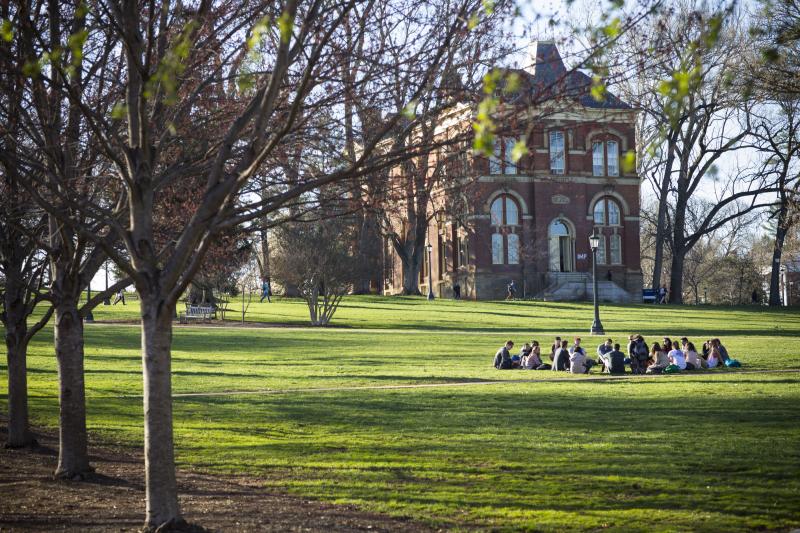Arts & Sciences Welcomes 65 New Faculty This Year

September, 2014
A letter from Dean Ian Baucom
Dear Colleagues,

It’s an exciting time for the College and Graduate School of Arts & Sciences. The pace of growth and revitalization of this academic institution continues to accelerate, as another large wave of new faculty arrives on Grounds this fall. As the new dean, I count myself as part of that cohort, and I can’t help but feel empowered by the world- class group of scholars, researchers and educators gravitating to A&S. Its reputation for excellence in undergraduate education and graduate programs through exceptional teaching and research is longstanding. And this period of transition only serves to strengthen our world-class institution.
We welcome 65 new faculty members to the College this academic year. That’s almost twice as many as the number that joined our faculty last year, and by 2018-19, nearly half of the Arts & Sciences faculty will be new. That type of generational transformation has a lightning-in-a-bottle quality, and
The new hires include promising young academics who completed prestigious post-doctoral fellowships at institutions such as Stanford, and Columbia University. They include the Department of Sociology and the Women, Gender & Sexuality program’s joint hiring of a National Science Foundation Postdoctoral Research Fellow at Princeton University. Her research explores the interplay between culture, science, health, and medicine with a particular focus on the social and cultural dimensions of public health and reproduction.
Among the new hires, several renowned artists are joining us for the term, thanks to distinguished residency programs created to support their invaluable interaction with our students and faculty. In its inaugural year, the Kapnick Foundation Distinguished Writer- in-Residence Endowment secured the commitment of a legendary American novelist of whom author Richard Ford once wrote, “It is an article of faith among readers of fiction that [he] writes American sentences better than anyone writing today.” The students in his MFA fiction workshop will work closely with this master of the American novel, while his public lectures are sure to draw appreciative crowds.
In the McIntire Department of Art, our new Ruffin Distinguished Artist in Residence is a New York-based artist who specializes in visual art and performance. Her works investigating the boundaries of spectatorship in the visual and performing arts have been exhibited nationally and internationally, and our studio art students should relish the opportunity to study and collaborate with this unique artist.
Our Mellon Foundation grant continues to fund our efforts to expand our strengths in the humanities with the hiring of additional interdisciplinary faculty accustomed to collaborating with colleagues across varied fields of study. One of the new Mellon hires, the art department’s new assistant professor in Byzantine art and archaeology, specializes in landscape and household archaeology of the Byzantine world. Before her arrival at U.Va., she was a postdoctoral fellow at Brown University and has participated in fieldwork in the Greek islands of Lemnos and Thasos, as well as in Athens, Thebes, Albania, Turkey, the United Kingdom, and Germany.
Another of our new Mellon-funded interdisciplinary faculty members is joining the Department of East Asian Languages as part of the “Connective Cultures of the Pre- Modern World” cluster. She joins us from The School Of Oriental and African Studies at the University of London, where she served as a senior teaching fellow in the Study of Religions after completing her Ph.D. there.
Not to be outdone, the Department of Philosophy welcomes its addition of an internationally known metaphysician whose research interests include disability and feminism. The Department of English and the Carter G. Woodson Institute for African-American and African Studies, meanwhile, collaborated on a joint hire of a promising young scholar of postcolonial and Caribbean literature, one of three new faculty joining the Institute.
In the social sciences, one of our new economics professors joins us from the University of California, Berkeley. He stands at the forefront of pioneering efforts to utilize the “big data” resources and methodology of computer science and engineering for social science research; his hiring comes at a time when the College is seeking to bridge divides between the University’s other schools and to create new research and teaching in the area of computation and data science.
In the sciences, computational research and expertise emerged as one of the key hiring themes. Our new faculty include a computational chemist, an astrophysicist and a quantitative psychologist, as well as faculty additions to the Departments of Statistics and Atmospheric Sciences. Among them, we welcome to the Department of Chemistry an assistant professor who received his Ph.D. from Caltech while working with Nobel Laureate Ahmed Zewail. This addition to Chemistry spent the last two years at Stanford as a post-doc, working to develop new super-resolution microscopy techniques for live-cell imaging.
The Department of Chemistry is also welcoming a scholar from the University of Chicago’s department of surgery. Her work in bioanalytic research involves the development of microfluidic technology to study complex biological dynamics in the immune system. The goal for her valuable research, ultimately, is to guide the design of vaccines and immunotherapies. Her efforts are leading us to a greater understanding of the processes that generate protective immunity against vaccines on one hand, while damaging autoimmune inflammation on the other.

I can’t do justice in this short space to the talents and accomplishments of each of the new faculty joining the College this fall. However, each of them, featured in the pages that follow, represent a key step forward in the College’s efforts to expand and strengthen an already vibrant institution. We welcome them all and look forward to their collective and singular impacts on the University of Virginia and beyond.
Sincerely,
Ian Baucom
Bucker W. Clay Dean
College and Graduate School of Arts & Sciences
University of Virginia




